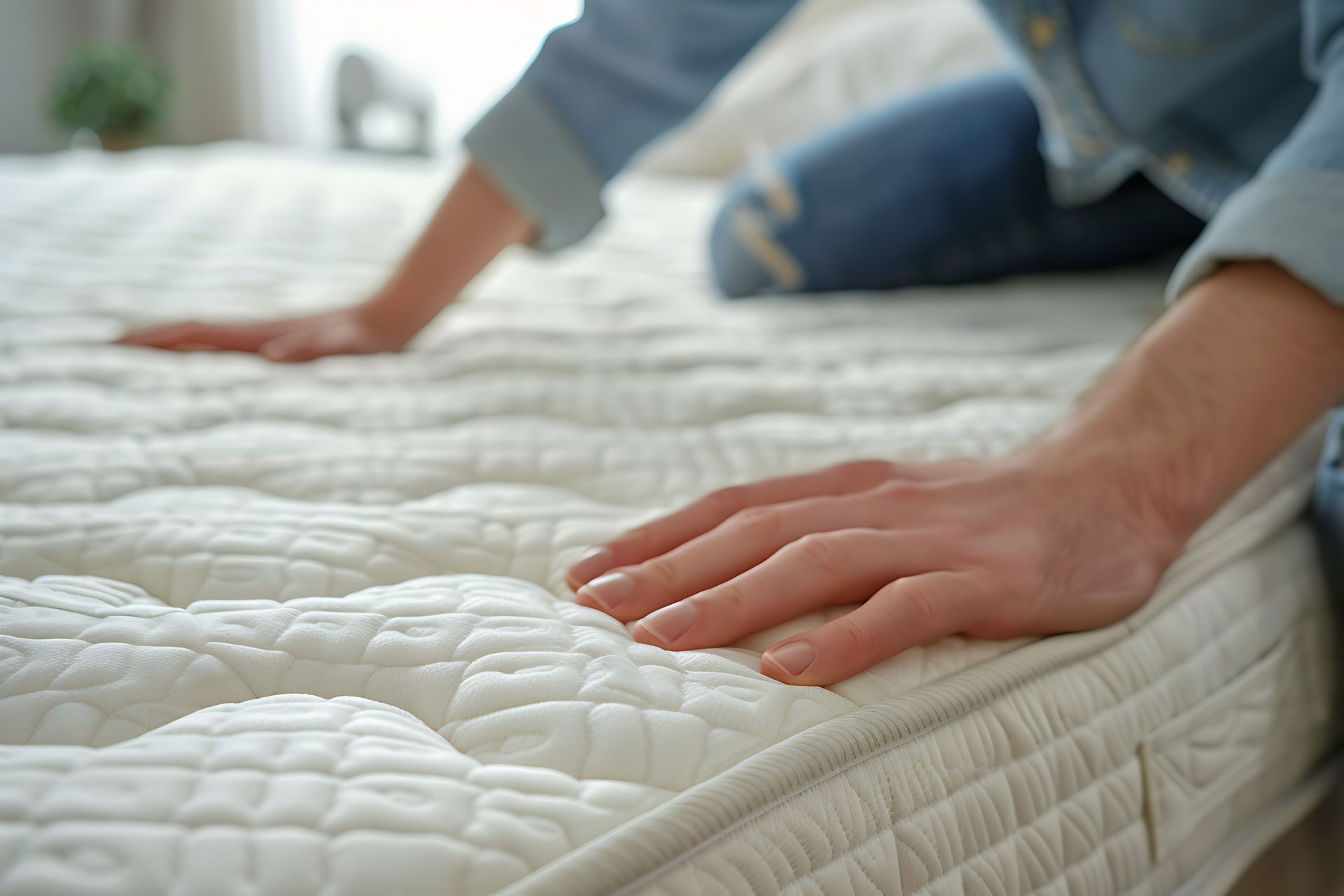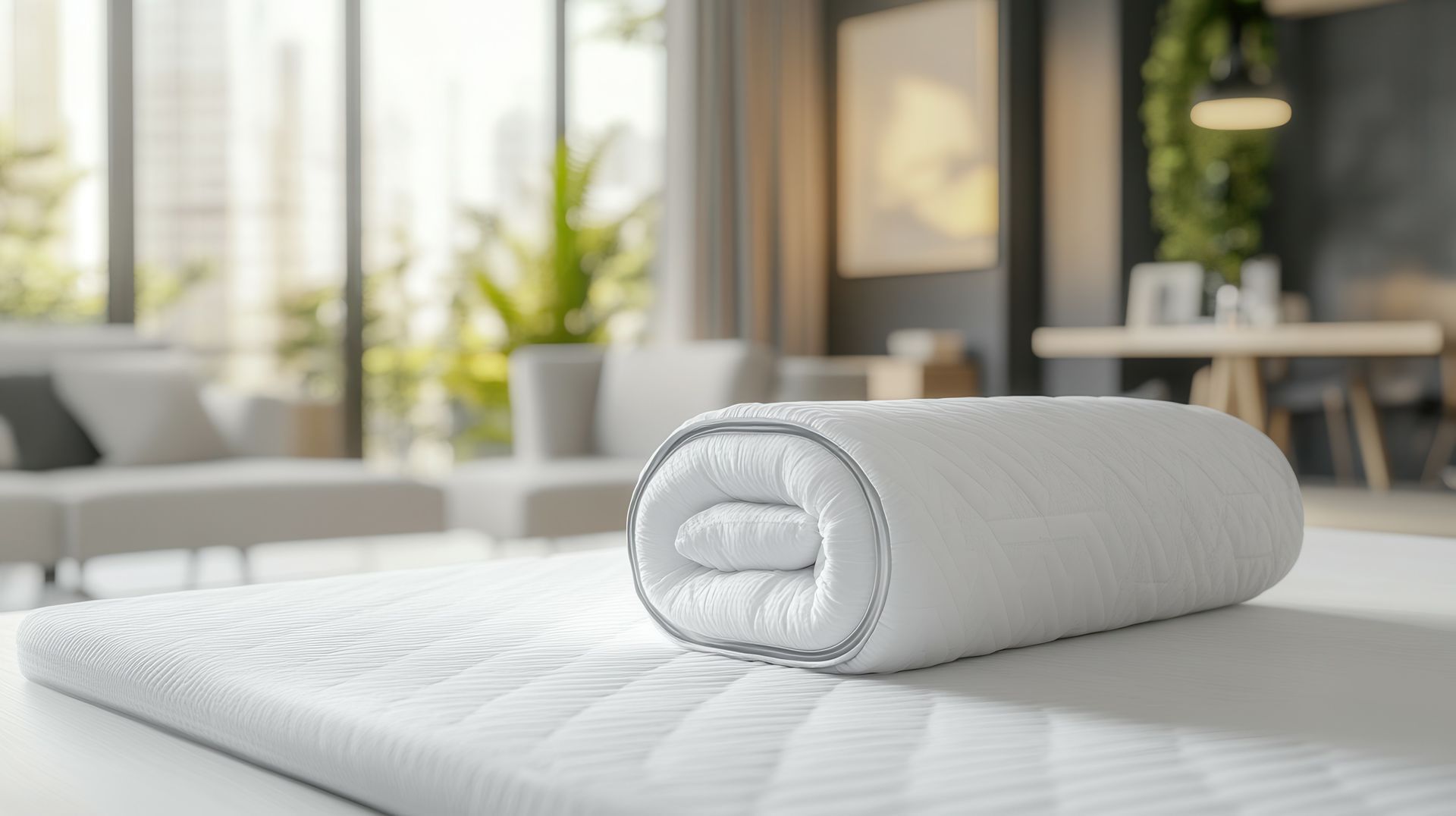Get a KING for the price of a QUEEN and a QUEEN for the price of a FULL! | Shop Now!

As winter sets in and temperatures drop, staying warm in bed without turning up the thermostat can be a challenge. Fortunately, there are simple, affordable ways to stay cozy without increasing energy costs.
By layering properly, using the right bedding materials and adopting a few smart techniques, you can retain body heat naturally and wake up feeling snug.
Layer Up with the Right Bedding Materials
Layering your bedding is one of the most effective ways to retain warmth, as it traps heat and creates insulating pockets that keep you cozy.
Instead of one thick comforter, opt for multiple layers that you can add or remove depending on the night’s temperature.
- Start with a sheet layer: Begin with a fitted flannel or jersey sheet, both of which are known for their warmth. Flannel, made of brushed cotton, traps heat better than standard cotton sheets, while jersey is soft, stretchy and adds a warm touch to the bed.
- Add a wool or fleece blanket: Wool is an excellent insulator and helps keep your body heat in without overheating. Fleece is a synthetic alternative that also provides warmth without the weight of wool. Both materials are lightweight yet highly effective at retaining warmth.
- Top it off with a comforter or duvet: The final layer should be a comforter or duvet, preferably with down or down-alternative filling. Down retains warmth well and has a loftiness that’s ideal for insulation. Down-alternatives can provide similar warmth without allergens, making them a great choice for those sensitive to natural feathers.
Choose Bedding Fabrics that Naturally Retain Heat
Certain fabrics are better than others when it comes to staying warm in cold weather. Opt for materials that have natural heat-retention properties and avoid thin or lightweight fabrics that don’t insulate well.
- Flannel and fleece: Both of these are cold-weather favorites for a reason. Flannel sheets, often made of cotton, are brushed for softness and have a natural ability to trap body heat. Fleece, made from synthetic fibers, is soft, fluffy and provides similar warmth, making it perfect for layering without adding weight.
- Wool blankets: Wool is a great insulator because of its fibers’ natural ability to trap air. Wool blankets add warmth without feeling bulky, making them a great addition to any bedding setup.
- Down or down-alternative comforters: Down is the ultimate material for warmth due to its loft and heat-trapping qualities. Down-alternative comforters, made from synthetic materials, can mimic this effect and are hypoallergenic, making them ideal for allergy sufferers.
Pre-Warm Your Bed
Pre-warming your bed can make slipping in on a cold night much more pleasant. While electric blankets are one option, there are also more energy-efficient alternatives to consider.
- Hot water bottle: A simple hot water bottle placed at the foot of the bed can warm up your sheets effectively. This classic method is inexpensive, energy-free and safe, providing a localized heat source for extra coziness.
- Heated mattress pad: If you’re looking for a more widespread warming effect, a heated mattress pad is a low-energy option. Turn it on about 15 minutes before bed and turn it off once you’re settled to save on energy costs while still enjoying a warm start.
- Microwaveable heating pads: If a hot water bottle isn’t an option, try a microwaveable heating pad or rice-filled sock. These can be warmed in the microwave and offer a similar localized heat source.
Dress Warmly for Bed
Staying warm isn’t just about what’s on your bed; it’s also about what you wear. Choosing the right sleepwear can help maintain body heat and make a big difference in how cozy you feel.
Pajamas made from flannel, wool or fleece are ideal for winter nights. These materials are insulating and trap body heat better than lighter fabrics like cotton.
Wool or thermal socks can also improve circulation and help retain body heat. If you tend to get especially cold, consider layering a thermal undershirt or leggings under your pajamas. These add an extra level of insulation without feeling restrictive.
Block Out Drafts and Insulate Your Room
Preventing cold air from entering your room can keep your entire space, including your bed, warmer. A few adjustments around the room can help maintain warmth throughout the night.
- Use draft stoppers: Place draft stoppers at the base of doors to prevent cold air from seeping into the room. Even a rolled-up towel can work as a quick fix.
- Close the curtains: Heavy curtains or thermal drapes can prevent heat loss through windows, especially if they’re not fully insulated. Keeping the curtains closed at night can make a noticeable difference in your room’s temperature.
- Use a humidifier: Cold, dry air can feel colder than it actually is. Adding a humidifier to your room helps maintain moisture, which in turn can make the air feel warmer and more comfortable.
Keep Moving During the Day
Physical activity during the day helps boost circulation and keeps your body warmer in general. Staying active can prevent your muscles from feeling stiff, and the warmth from exercise often translates to better heat retention later in the evening.
Stay Cozy All Winter With Our Handmade Mattresses
Keeping warm at night doesn’t mean you have to turn up the thermostat and deal with higher energy bills. With the right layers, materials and simple adjustments, you can enjoy a comfortable night’s sleep no matter how low the temperatures drop.
Spokane-area sleepers can learn more about our mattresses and our customization options by calling our North Spokane Showroom at (509) 413-2431 or our Spokane Valley Showroom at (509) 926-2333. We encourage you to visit either of our Spokane locations to try out our mattresses for yourself.
Our Mattresses
Our Locations
North Spokane Showroom
12519 N Division St, Suite 4
Spokane, WA 99218
(509) 413-2431
Map & Directions
Business Hours
- Mon - Fri
- -
- Saturday
- -
- Sunday
- Closed






